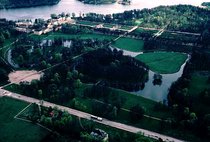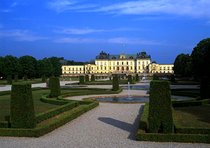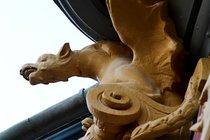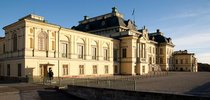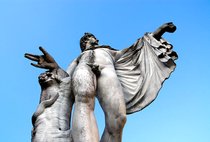Drottningholm (World Heritage)
The palace of Drottningholm and its park on Lovön in Mälaren is the greatest building work from the Swedish period as a major power, truly a “Swedish Versailles”.
Today, Drottningholm is an excellently well-preserved palace complex from the 17th and 18th centuries, modelled on French examples.
The name Drottningholm dates from 1580, when Johan III was on the throne. He had a stone house built here for his Polish queen, Katarina Jagellonica. After a fire in 1661, architect Nicodemus Tessin the Elder was commissioned to design a new palace, based on the old walls and cellar arches, which had survived the fire. The palace he designed was essentially completed, and decoration had begun, when Tessin died in 1681. His son, Nicodemus Tessin the Younger, took over responsibility, with the aid of leading artists in Sweden. The main building houses state rooms, and a magnificent staircase, while living quarters are located in two wings. Hedvig Eleonora’s state bedchamber and the Gustavian Library of Lovisa Ulrika are particularly famous.
Spoils of war in the park
A French baroque garden was constructed beside the palace and this has largely been preserved. The bronze sculptures in the garden are copies of works by the most prominent sculptor of the northern European renaissance, Adrian de Vries. The originals are kept in the Museum de Vries in the Dragoon stables at Drottningholm Inn. The collection was brought to Sweden as war booty, some of it from Prague and some from Frederiksborg in Denmark. Drottningholm Palace was to remain the domain of the royal women. It was given as wedding gift in 1744 to Princess Lovisa Ulrika of Prussia on her marriage to the Crown Prince Adolf Fredrik. Lovisa Ulrika had a further storey added to one of the palace wings. And it was on her initiative that the Drottningholm Theatre was built in 1766. This has stood pretty much unchanged since her time, and original stage machinery and many side scenes from the 18th century remain.
The royal residence
Lovisa Ulrika sold Drottningholm to the Swedish state in 1777. It underwent a thorough restoration in the years 1907-1911, and since 1981 it has been the official residence of the royal family. The family lives in the southern wing.
The exotic Chinese Pavilion is the best example of the idolisation by 18th century Sweden of Chinese culture.
A group of buildings next to the Chinese Pavilion known as Canton was built as an industrial society in miniature, in the 1750s and 1760s. The main products were silk, lace and delicate ironwork. Around 10 buildings from this period remain on each side of the road to the Chinese Pavilion.
During the reign of Gustav III, the largest project undertaken was the English Park, construction of which began in 1778 north of the baroque garden. Only one of the many monuments that were planned for the park became a reality – the Geatish tower. Otherwise, the park was decorated by copies of ancient marble statues that the king purchased during a journey to Italy.
World Heritage
Drottningholm was added to the list of invaluable world cultural heritage in 1991. The motivation is as follows: “The domain of Drottningholm – with its palace, theatre, Chinese pavilion and palace grounds – is the best preserved example of a royal palace constructed during the 18th century in Sweden that is, at the same time, representative for all European royal architecture from this period, based on Versailles as its model and source of inspiration.”
Links
The royal palaces, Drottningholm
World Heritage Properties
UNESCO and the World Heritage List
Closest public transport is the SL stop Drottningholm.

